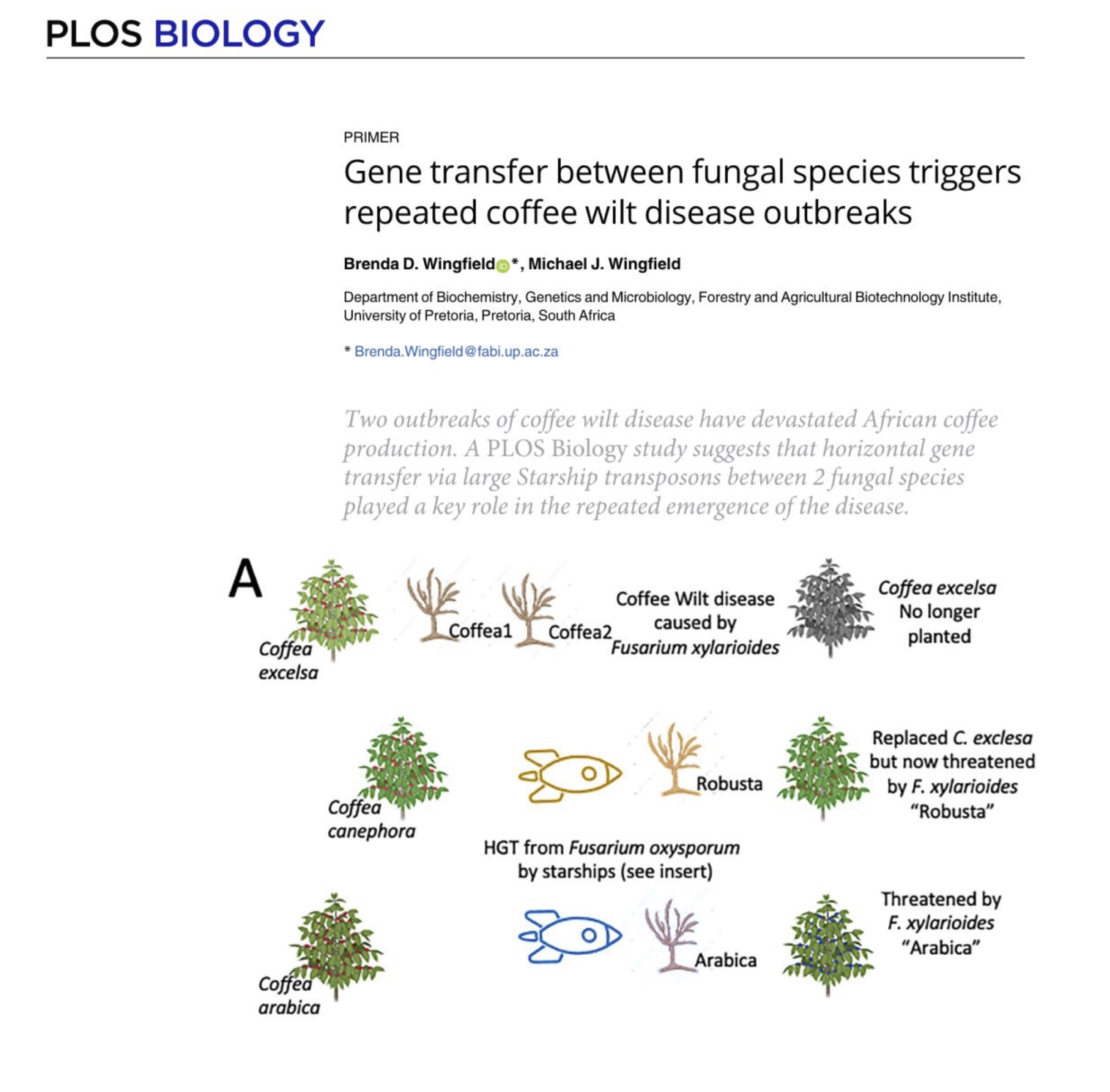Mechanisms of evolutionary change
The role of genome structure in adaptation
Across eukaryota, we see dizzying amounts of diversity, with different organisms undergoing peculiar mechanisms through the processes of adaptation and diversification. I am particularly interested in how genome structure interacts with these processes in complex non-model organisms. My PhD revealed that horizontally transferred regions repeatedly contributed to the emergence of coffee wilt disease through the transfer of pathogenicity gene- and repeat-rich regions. My postdoc focuses on genetic, specifically transposable elements, and epigenetic, specifically DNA methylation, changes in oaks in response to environmental stress. These changes target drought-responsive genes and traits. Such mechanisms, be it horizontal transfer or (epi)-genetic modifications, can increase genome variability, which can result in the evolution or activation of stress-responsive genes. Such processes can also result in adaptation to new hosts or new environments.
Representative publications on this topic include:
- Peck, L.D., Llewellyn, T., Bennetot, B., O’Donnell, S., Nowell, R.W., Ryan, M.J., Flood, J., Rodríguez De La Vega, R.C., Ropars, J., Giraud, T., Spanu, P.D. and Barraclough, T.G. (2024) ‘Horizontal transfers between fungal Fusarium species contributed to successive outbreaks of coffee wilt disease’, PLoS Biology 22, 12: e3002480.
- Peck, L.D., Nowell, R.W., Flood, J., Ryan, M.J. and Barraclough, T.G. (2021) ‘Historical genomics reveals the evolutionary mechanisms behind multiple outbreaks of the host-specific coffee wilt pathogen Fusarium xylarioides’, BMC Genomics, 22(1), p. 404.
Media highlights on this topic:
- Wingfield, B.D., and Wingfield, M.J. (2024) ‘Gene transfer between fungal species triggers repeated coffee wilt disease outbreaks’, PLoS Biology 22, 12: e3002901.
- Researchers Resurrect Coffee-Destroying Fungus—to Study It, written by Chloe Tenn for The Scientist
